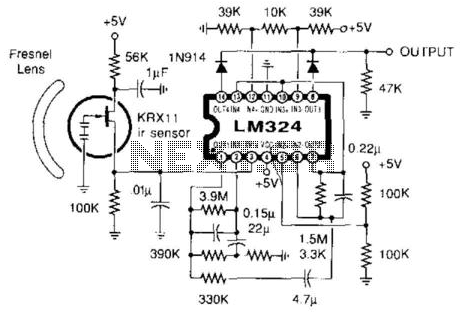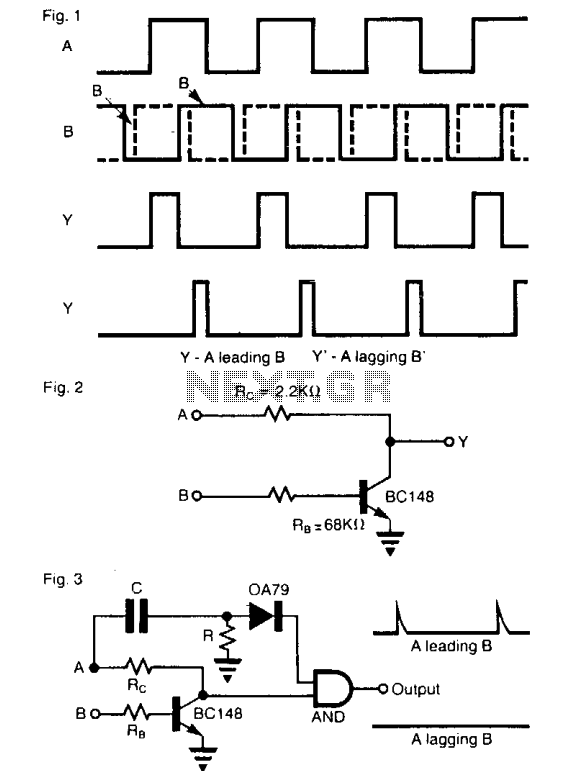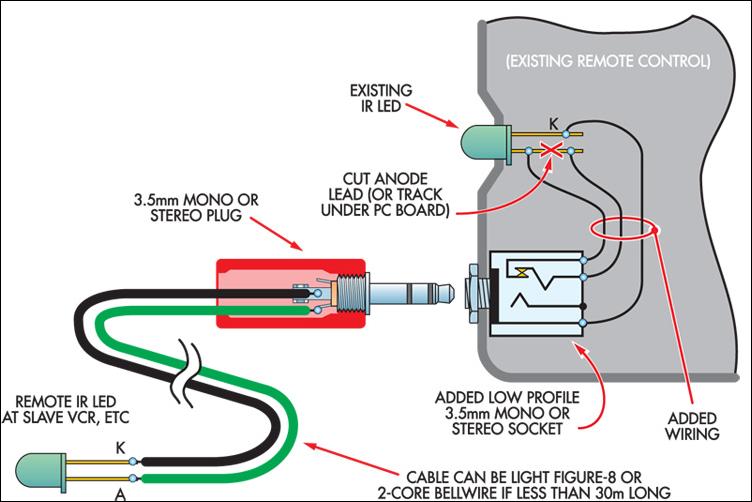
Infrared "People" Detector

This circuit utilizes an Amperex pyroelectric infrared sensor, an LM324 operational amplifier configured as a high-gain amplifier within the 0.3 to 5 Hz frequency range, and a window detector. The output will activate (go high) upon detecting motion, which alters the infrared signature perceived by the sensor.
The circuit design incorporates an Amperex pyroelectric infrared (IR) sensor, which is sensitive to changes in infrared radiation, typically emitted by warm objects such as humans or animals. This sensor is capable of detecting motion by measuring variations in the infrared signature within its field of view. The LM324 operational amplifier serves as a high-gain amplifier, enhancing the small signals generated by the sensor to a level suitable for further processing. It is configured to operate effectively within a frequency range of 0.3 to 5 Hz, which is ideal for detecting slow-moving objects.
The window detector is an additional component that monitors the output from the LM324 amplifier. It is designed to trigger a high output signal when motion is detected, indicating that there has been a significant change in the infrared signature. This functionality is essential for applications such as security systems, where the detection of motion is critical.
The overall circuit may include additional features such as hysteresis to prevent false triggering and ensure stable operation. Power supply considerations, component tolerances, and environmental factors may also influence the performance of the circuit, necessitating careful design and testing to achieve reliable motion detection. This circuit uses an Amperex pyroelectric IR sensor, an LM324 op amp (configured as a high-gain amplifier in the 0.3-to 5-Hz range), and a window detector. The output will go high on any motion, which will change the infrared signature seen by the sensor.
The circuit design incorporates an Amperex pyroelectric infrared (IR) sensor, which is sensitive to changes in infrared radiation, typically emitted by warm objects such as humans or animals. This sensor is capable of detecting motion by measuring variations in the infrared signature within its field of view. The LM324 operational amplifier serves as a high-gain amplifier, enhancing the small signals generated by the sensor to a level suitable for further processing. It is configured to operate effectively within a frequency range of 0.3 to 5 Hz, which is ideal for detecting slow-moving objects.
The window detector is an additional component that monitors the output from the LM324 amplifier. It is designed to trigger a high output signal when motion is detected, indicating that there has been a significant change in the infrared signature. This functionality is essential for applications such as security systems, where the detection of motion is critical.
The overall circuit may include additional features such as hysteresis to prevent false triggering and ensure stable operation. Power supply considerations, component tolerances, and environmental factors may also influence the performance of the circuit, necessitating careful design and testing to achieve reliable motion detection. This circuit uses an Amperex pyroelectric IR sensor, an LM324 op amp (configured as a high-gain amplifier in the 0.3-to 5-Hz range), and a window detector. The output will go high on any motion, which will change the infrared signature seen by the sensor.





